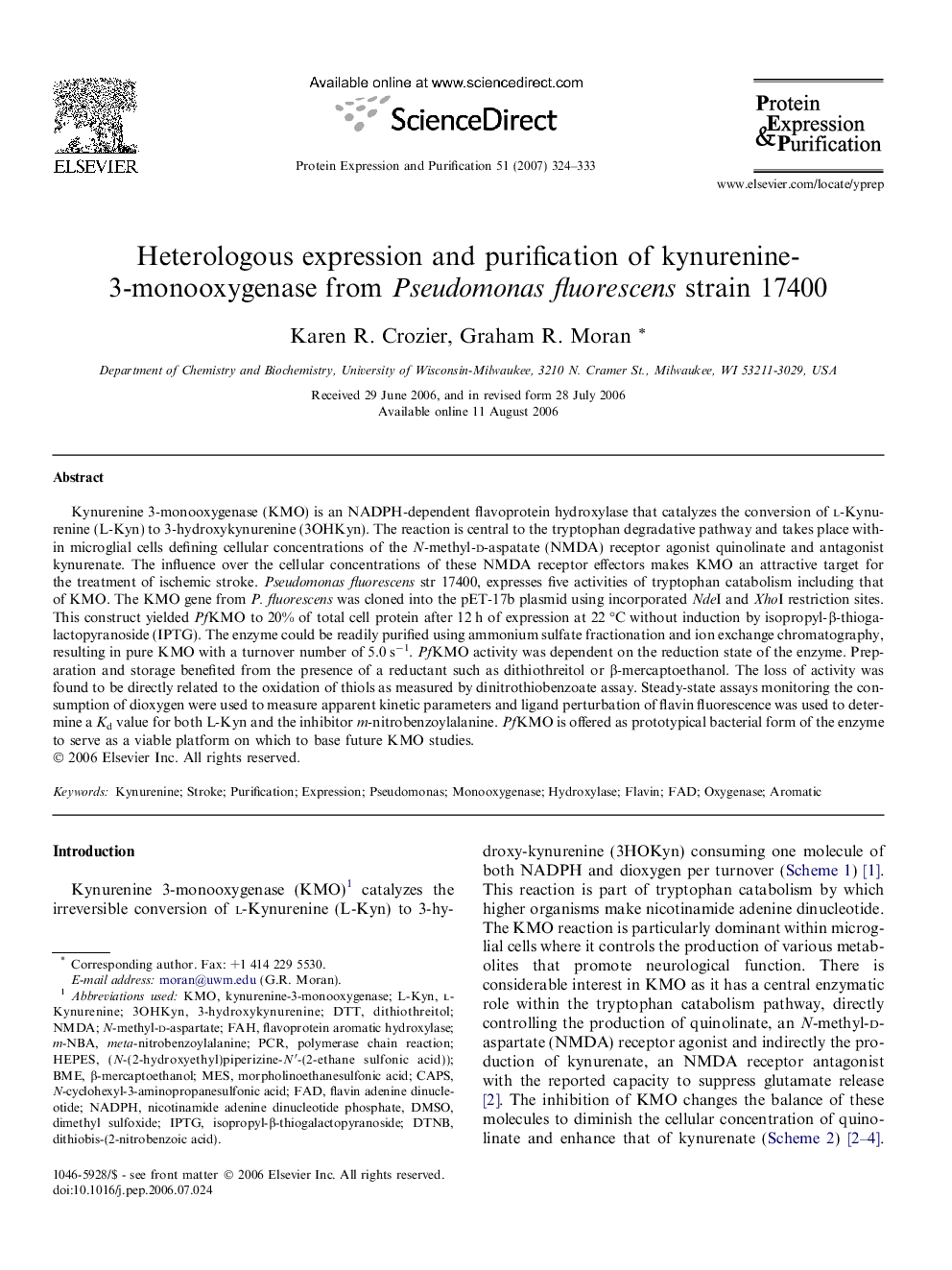| Article ID | Journal | Published Year | Pages | File Type |
|---|---|---|---|---|
| 2021475 | Protein Expression and Purification | 2007 | 10 Pages |
Kynurenine 3-monooxygenase (KMO) is an NADPH-dependent flavoprotein hydroxylase that catalyzes the conversion of l-Kynurenine (L-Kyn) to 3-hydroxykynurenine (3OHKyn). The reaction is central to the tryptophan degradative pathway and takes place within microglial cells defining cellular concentrations of the N-methyl-d-aspatate (NMDA) receptor agonist quinolinate and antagonist kynurenate. The influence over the cellular concentrations of these NMDA receptor effectors makes KMO an attractive target for the treatment of ischemic stroke. Pseudomonas fluorescens str 17400, expresses five activities of tryptophan catabolism including that of KMO. The KMO gene from P. fluorescens was cloned into the pET-17b plasmid using incorporated NdeI and XhoI restriction sites. This construct yielded PfKMO to 20% of total cell protein after 12 h of expression at 22 °C without induction by isopropyl-β-thiogalactopyranoside (IPTG). The enzyme could be readily purified using ammonium sulfate fractionation and ion exchange chromatography, resulting in pure KMO with a turnover number of 5.0 s−1. PfKMO activity was dependent on the reduction state of the enzyme. Preparation and storage benefited from the presence of a reductant such as dithiothreitol or β-mercaptoethanol. The loss of activity was found to be directly related to the oxidation of thiols as measured by dinitrothiobenzoate assay. Steady-state assays monitoring the consumption of dioxygen were used to measure apparent kinetic parameters and ligand perturbation of flavin fluorescence was used to determine a Kd value for both L-Kyn and the inhibitor m-nitrobenzoylalanine. PfKMO is offered as prototypical bacterial form of the enzyme to serve as a viable platform on which to base future KMO studies.
